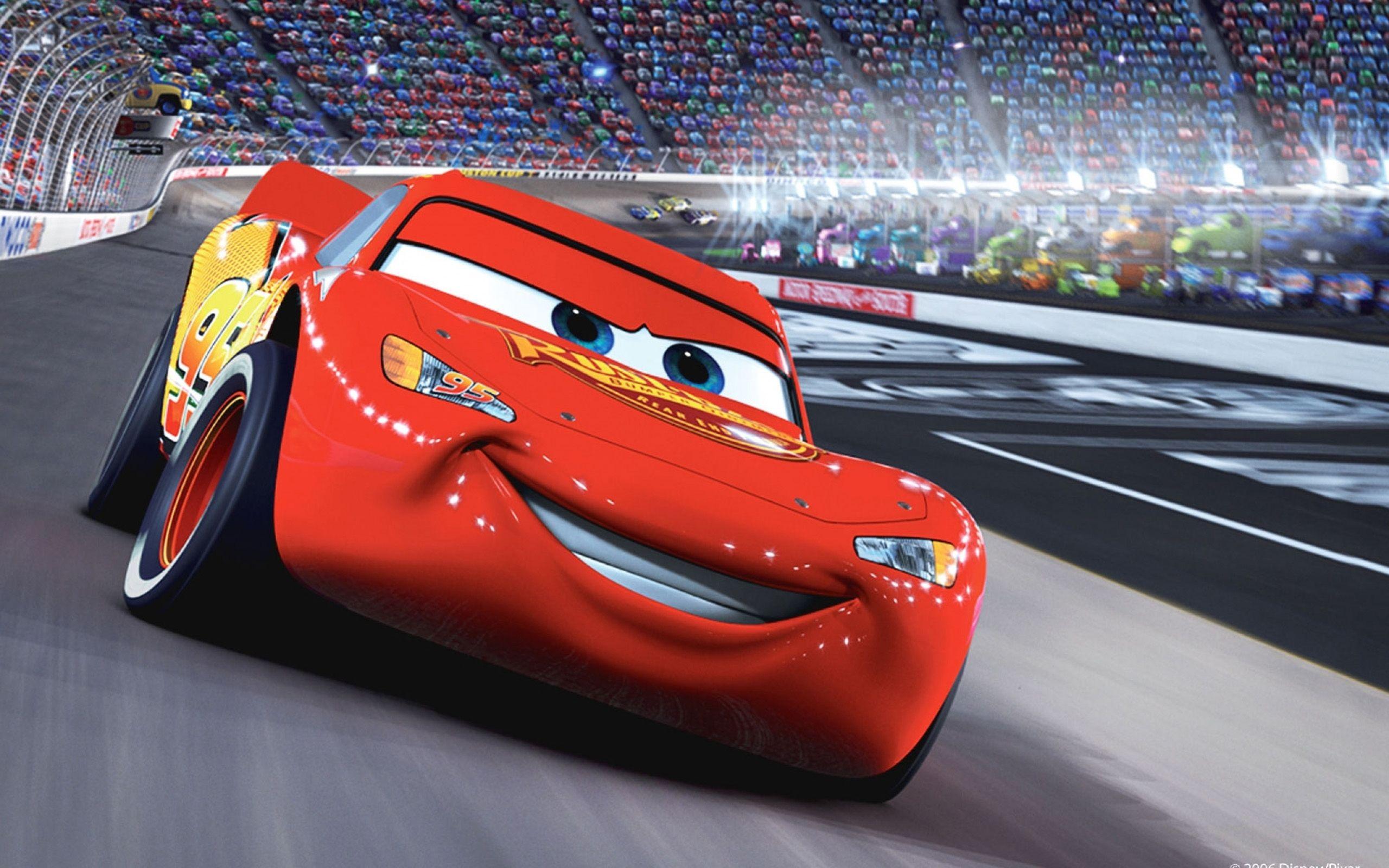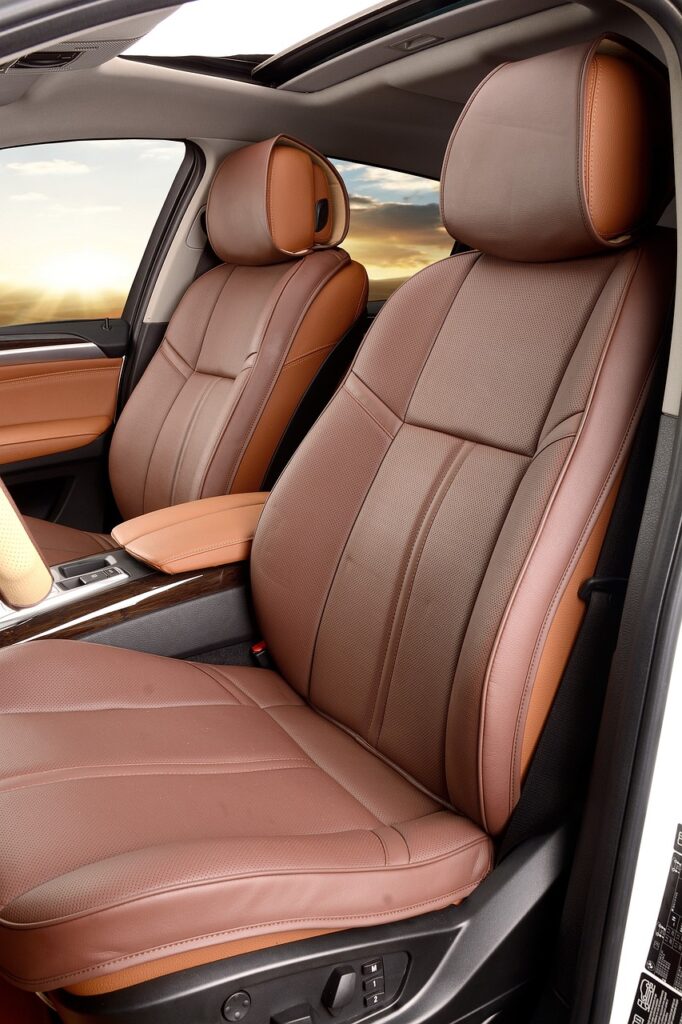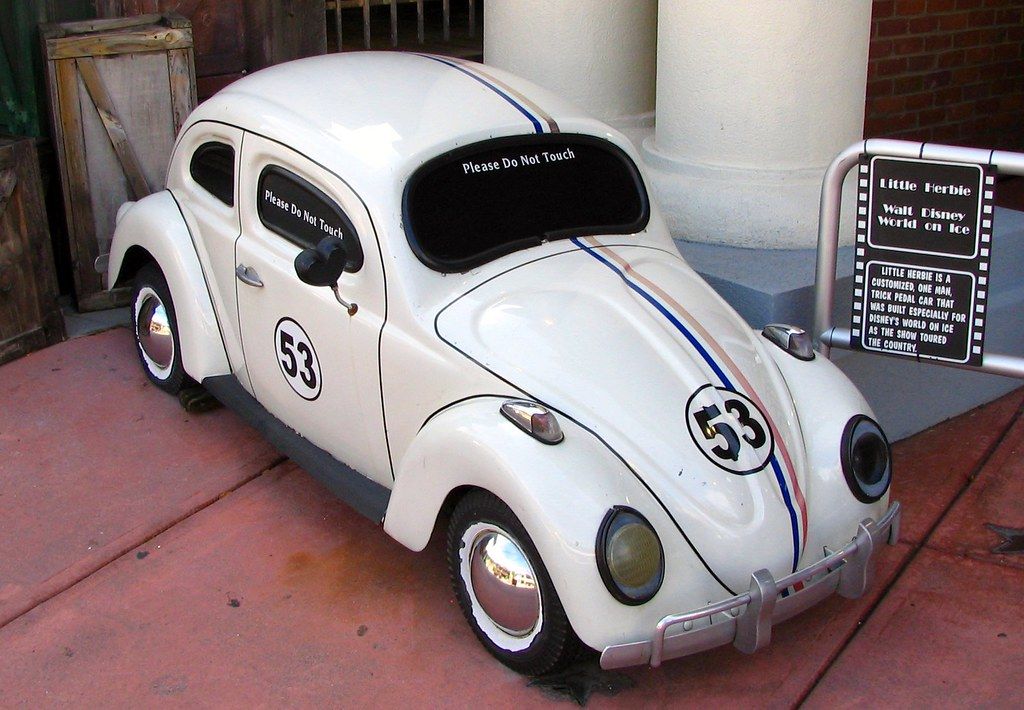
The relationship between cinema and automobiles transcends mere transportation; it’s a profound symbiosis where vehicles become extensions of character, plot, and even societal aspirations. Iconic movie cars are far more than functional props; they are meticulously crafted characters in their own right, each imbued with a story that resonates deeply with audiences and automotive enthusiasts across generations. These machines, whether futuristic marvels or rugged symbols of resistance, weave themselves into the fabric of pop culture, igniting imaginations and shaping our collective automotive dreams.
Understanding the enduring allure of these cinematic legends requires a deep dive into not just their on-screen heroics but also the intricate ‘how’ and ‘why’ behind their cultural entrenchment. From cutting-edge gadgets that hint at future technologies to designs that mirror evolving societal values, these vehicles offer a unique lens through which to examine innovation, storytelling, and the intersection of technology with culture. They challenge our perceptions, inspiring both real-world engineering and the imaginative reinvention of classic models, proving that some cars truly never fade from memory.
In this first exploration, we embark on a journey through seven seminal vehicles from the classic era of cinema and television, examining how they transcended their mechanical purpose to become cultural touchstones. We’ll explore their distinct designs, the technological ambitions they embodied, and the powerful narratives they helped craft, leaving an indelible mark on both film history and automotive culture. Prepare to buckle up and delve into the stories of the machines that not only defined their respective eras but also continue to spark passion in enthusiasts worldwide.

1. **DeLorean DMC-12 from “Back to the Future”** The DeLorean DMC-12 stands as perhaps the ultimate symbol of cinematic time travel, a testament to how a vehicle’s distinctive design can perfectly align with a groundbreaking narrative. With its iconic gull-wing doors and striking stainless steel body, the DeLorean became the indispensable vessel for Marty McFly’s escapades through time in the seminal “Back to the Future” series. Beyond its unforgettable screen presence, the car ignited a profound cultural fascination with the concept of time travel, embodying the spirit of innovation and the distinct aesthetic of the 1980s. Its unique silhouette and role in shaping a beloved fantasy have cemented its place in cinematic lore.
Despite its real-world commercial struggles and a rather sluggish 2.85-litre V6 engine, the DeLorean’s cinematic legacy proved robust, sparking a fervent cult following that persists to this day. Its enduring appeal is evident in countless references, replicas, and a devoted fan base, ensuring its perpetual presence in pop culture. A screen-used model, complete with Doc Brown’s flux capacitor and glowing reactor props, was auctioned in 2023 for a staggering £3.8 million, highlighting its timeless allure. Furthermore, the spirit of innovation continues with modern EV conversions, reimagining this retro-futuristic icon for a sustainable future, bridging nostalgia with contemporary technological advancements.
Car Model Information: 1982 Delorean DMC-12
Name: DMC DeLorean
Alt: 1983 DeLorean
Caption: 1983 DeLorean
Manufacturer: DeLorean Motor Company
Production: January 21, 1981 – December 1982
ModelYears: 1981–1983
Assembly: Dunmurry
Designer: Giorgetto Giugiaro
Class: Sports car
BodyStyle: coupé
Layout: Rear-engine, rear-wheel-drive layout
Doors: Gull-wing doors
Engine: 2.85 L
Abbr: on
Powerout: 130 hp
Transmission: 5-speed manual ,3-speed automatic
Wheelbase: 2413 mm
Length: 4267 mm
Width: 1988 mm
Height: 1140 mm
Weight: 1233 kg
Sp: us
Categories: 1980s cars, All Wikipedia articles written in American English, Articles with short description, Automobiles with backbone chassis, Automobiles with gull-wing doors
Summary: The DMC DeLorean is a rear-engine, two-seat sports car manufactured and marketed by John DeLorean’s DeLorean Motor Company (DMC) for the American market from 1981 until 1983—ultimately the only car brought to market by the fledgling company. The DeLorean is sometimes referred to by its internal DMC pre-production designation, DMC-12, although this was not used in sales or marketing materials for the production model.
Designed by Giorgetto Giugiaro, the DeLorean is noted for its gull-wing doors and brushed stainless-steel outer body panels, as well as its lack of power and performance. Though its production was short-lived, the DeLorean became widely known after it was featured as the time machine in the Back to the Future films.
With the first production car completed on January 21, 1981, the design incorporated numerous minor revisions to the hood, wheels and interior before production ended in late December 1982, shortly after DMC filed for bankruptcy and after total production reached an estimated 9,000 units.
Despite the car having a reputation for poor build quality and an unsatisfactory driving experience, the DeLorean continues to have a strong following, driven in part by the popularity of Back to the Future. 6,500 DeLoreans were estimated to still be on the road as of 2015.
Get more information about: DMC DeLorean
Buying a high-performing used car >>>
Brand: DeLorean Model: DMC-12
Price: $129,950 Mileage: 3,145 mi.
Read more about: Unearthing Hidden Gems: 14 Iconic Classic Cars That Are Surprisingly Affordable Today

2. **The Batmobile from Various Batman Films** More than just a mode of transport, the Batmobile is a dynamic reflection of Batman’s evolving character, meticulously mirroring the thematic and aesthetic choices of each era’s cinematic and television interpretations. From the sleek, finned models of the 1960s television series, designed by George Barris from a Lincoln Futura concept car, to Tim Burton’s brooding gothic interpretation, and Christopher Nolan’s militaristic Tumbler, each iteration embodies a distinct vision of the Caped Crusader. The 1966 Batmobile, with its jet-engine roar and campy gadgets like smoke screens and a “Bat-Turn” lever, was a pop-culture phenomenon, perfectly capturing the show’s playful tone.
The vehicle’s formidable array of gadgets and advanced capabilities has consistently captivated viewers, showcasing the pinnacle of crime-fighting technology and cementing its status as an enduring symbol of the Batman legacy. Nolan’s Tumbler, for instance, reimagined the Batmobile as a jet-engine-powered tank, with a 5.7-litre V8 and hydraulic suspension, capable of scaling walls and leaping gaps. Its angular design, a departure from traditional Batmobile fins, echoed post-9/11 anxieties and Bruce Wayne’s pragmatic brutality. This evolution underscores how the Batmobile adapts not just to narrative needs, but also to societal shifts, with the original Batmobile from Tim Burton’s 1989 film now estimated to be worth over $1 million, residing in a private museum in California.
Read more about: Engine Roar and Silver Screen Glory: The Some Most Iconic Movie Cars That Left an Indelible Mark
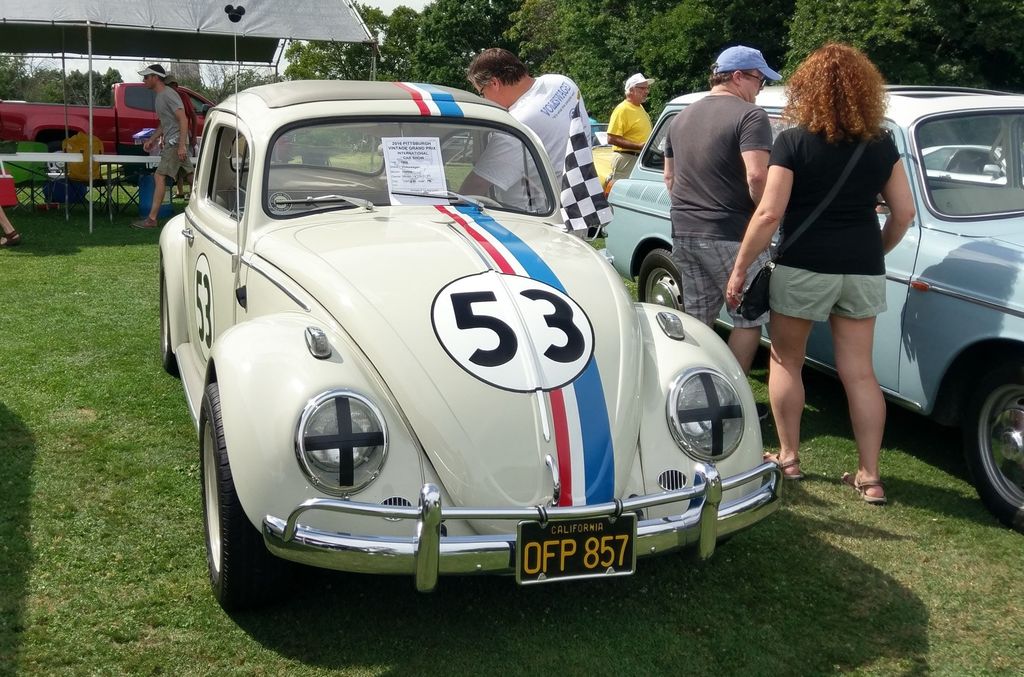
3. **Herbie from “The Love Bug” (1968)** Herbie, the anthropomorphic Volkswagen Beetle with a personality all its own, endeared itself to audiences worldwide, transforming a seemingly ordinary car into a beloved protagonist. The “Love Bug” series, commencing with the 1968 film, elevated Herbie beyond a mere vehicle, imbuing it with emotion, humor, and a penchant for extraordinary feats. This unique portrayal not only popularized the Volkswagen Beetle but also pioneered the concept of a car acting as a protagonist’s loyal partner, inspiring a genre of films where vehicles possess distinct, often heroic, characters. Herbie’s whimsical journey solidified its place in cinematic history, showcasing the powerful appeal of non-human companions.
Sporting its iconic racing stripes and the number 53, Herbie’s playful antics—such as famously splitting in two mid-race and then miraculously reuniting at the finish line—made it a potent symbol of perseverance and underdog spirit. While powered by a modest 1.3-litre engine, Herbie’s agility and endearing personality effortlessly overshadowed its technical specifications, captivating viewers with its charm rather than raw power. The Beetle’s enduring legacy is celebrated through restored models that fetch over £50,000 at auctions, and enthusiastic fan clubs that host annual “Herbie Rallies,” proving the lasting impact of this small car with a big heart.
Car Model Information: 1978 Volkswagen Beetle (Pre-1980) Base
Sp: uk
Name: Volkswagen Type 1,”Beetle”
Caption: 1965–1966 Volkswagen Käfer
Manufacturer: Volkswagen
Alt: A front-three quarters view of a pale-yellow Volkswagen Käfer. It features 165/80R15 tires, which shod 15×4. 5″ silver, circular wheels. The Käfer features a beetle-like body, and its window is open. The picture is taken with much greenery in the background, and the photo was edited to give it a more warmer tone.
Aka: List of names for the Volkswagen Type 1
Assembly: #Markets and assembly
Designer: Ferdinand Porsche
Class: Small family car
BodyStyle: Sedan (automobile),convertible
Production: 1938–2003,21,529,464 produced
Successor: Volkswagen Golf Mk1,Volkswagen Gol#First generation (Typ30, 1980),Volkswagen New Beetle
Layout: Rear-engine, rear-wheel-drive layout
Engine: Petrol,Volkswagen air-cooled engine,1192 cc H4,1285 cc H4,1493 cc H4,1584 cc H4
Transmission: manual transmission,Saxomat,Autostick
Wheelbase: convert
Length: convert
Width: convert
Height: 1500 mm
Abbr: on
Weight: convert
Categories: 1940s cars, 1950s cars, 1960s cars, 1970s cars, 1980s cars
Summary: The Volkswagen Beetle, officially the Volkswagen Type 1, is a small family car produced by the German company Volkswagen from 1938 to 2003. Considered a global cultural icon, the Beetle is widely regarded as one of the most influential cars of the 20th century. Its production period of 65 years is the longest of any single generation of automobile, and its total production of over 21.5 million is the most of any car of a single platform and the second-most of any nameplate produced in the 20th century.
The Beetle was conceived in the early 1930s. The leader of Nazi Germany, Adolf Hitler, decided there was a need for a people’s car—an inexpensive, simple, mass-produced car—to serve Germany’s new road network, the Reichsautobahn. The German engineer Ferdinand Porsche and his design team began developing and designing the car in the early 1930s, but the fundamental design concept can be attributed to Béla Barényi in 1925, predating Porsche’s claims by almost ten years. The result was the Volkswagen Type 1 and the introduction of the Volkswagen brand. Volkswagen initially slated production for the late 1930s, but the outbreak of war in 1939 meant that production was delayed until the war had ended. The car was originally called the Volkswagen Type 1 and marketed simply as the Volkswagen. It was not until 1968 that it was officially named the “Beetle”.
Volkswagen implemented designations for the Beetle in the 1960s, including 1200, 1300, 1500, 1600, 1302, and 1303. Volkswagen introduced a series of large luxury models throughout the 1960s and 1970s—comprising the Type 3, Type 4 and K70—to supplement the Beetle, but none of these models achieved the level of success that it did. Rapidly changing consumer preferences toward front-wheel drive compact hatchbacks in Europe prompted Volkswagen’s gradual shift away from rear-wheel drive, starting with the Golf in 1974. In the late 1970s and ’80s, Japanese automakers began to dominate some markets around the world, which contributed to the Beetle’s declining popularity.
Over its lifespan, the Beetle’s design remained consistent, yet Volkswagen implemented over 78,000 incremental updates. These modifications were often subtle, involving minor alterations to its exterior, interior, colours, and lighting. Some more noteworthy changes included the introduction of new engines, models and systems, such as improved technology or comfort. The Beetle maintains a substantial cultural influence and is regarded as one of the most iconic vehicles in automotive history; its success largely influenced the way automobiles are designed and marketed, whilst propelling Volkswagen’s introduction of a Golf-based series of vehicles.
Get more information about: Volkswagen Beetle
Buying a high-performing used car >>>
Brand: Volkswagen Model: Beetle
Price: $17,499 Mileage: 97,000 mi.
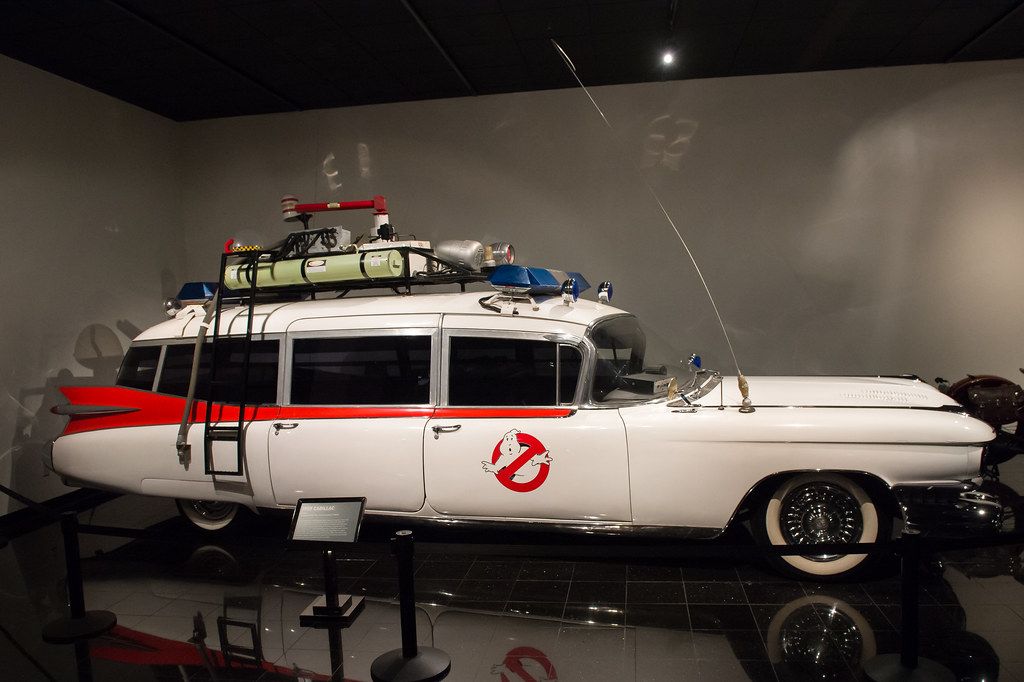
4. **Ecto-1 from “Ghostbusters” (1984)** The Ecto-1, a distinctively modified 1959 Cadillac Miller-Meteor ambulance, is unequivocally synonymous with the beloved “Ghostbusters” franchise, instantly recognizable by its unique siren, iconic logo, and an array of ghost-hunting equipment mounted on its roof. Its pivotal role in transporting the paranormal investigation team and their gear through the streets of New York City to supernatural hotspots across the metropolis firmly cemented its status as an undeniable pop culture icon. The Ecto-1’s memorable design perfectly encapsulates the film’s innovative blend of comedic elements and compelling paranormal themes, making it a truly unique and cherished vehicle.
This quirky yet eminently functional design resonated deeply with fans and collectors alike, symbolizing the Ghostbusters’ blend of scientific ingenuity and haphazard heroics. After years of falling into neglect, a testament to its cultural significance came with its full restoration, transforming it into a star attraction at the Sony Pictures lot in California. There, the Ecto-1 is prominently featured in studio tours and various promotional events, allowing generations of fans to connect with a tangible piece of cinematic history. Its journey from a forgotten prop to a meticulously preserved artifact underscores the powerful emotional connection audiences form with these unforgettable screen machines.

5. **The Aston Martin DB5 from James Bond Films** James Bond’s Aston Martin DB5, first making its unforgettable appearance in “Goldfinger” (1964), epitomizes the quintessential blend of sophistication, unparalleled style, and cutting-edge technology that defines the entire 007 franchise. Equipped with an awe-inspiring array of Q Branch gadgets, including deployable machine guns, a passenger ejector seat, rotating license plates, bulletproof glass, oil slicks, and sophisticated tracking systems, the DB5 swiftly became Bond’s most iconic vehicle. It symbolizes the ultimate spy-car fantasy, an elegant weapon seamlessly integrated into the suave yet deadly persona of the world’s most famous secret agent.
The DB5’s recurring appearances throughout numerous subsequent films underscore its timeless appeal and the enduring, symbiotic partnership between Aston Martin and the James Bond character. Its cultural impact is undeniable and continues to resonate, with one of the original models selling for an astonishing £4.6 million in 2024. This legendary vehicle also notably bridges generations, reappearing in modern Bond films such as “No Time to Die,” where it blends cherished nostalgia with contemporary technological advancements, unequivocally ensuring its perpetual status as the ultimate spy car and a benchmark for cinematic automotive design. Its 4.0-litre inline-six engine, delivering 282 horsepower, provided the muscle behind its on-screen gadgetry.
Car Model Information: 2023 Alfa Romeo Stelvio Veloce AWD
Name: Aston Martin DB5
Manufacturer: Aston Martin
Production: 1963–1965 (1,059 units),2020 (25 units)
Assembly: Newport Pagnell
Designer: Carrozzeria Touring Superleggera
Class: Grand tourer
BodyStyle: coupé
Layout: Front-engine, rear-wheel-drive layout
Engine: DOHC,Straight-6,3995 cc
Order: flip
Abbr: on
Powerout: convert
Transmission: ZF Friedrichshafen
Length: 4570 mm
Width: 1680 mm
Wheelbase: 98.0 in
Predecessor: Aston Martin DB4
Successor: Aston Martin DB6
Doors: 2
Weight: 3311 lb
Sp: uk
Categories: Articles with short description, Aston Martin vehicles, CS1: unfit URL, Cars discontinued in 1965, Cars introduced in 1963
Summary: The Aston Martin DB5 is a British grand tourer (GT) produced by Aston Martin and designed by Italian coachbuilder Carrozzeria Touring Superleggera. Originally produced from 1963 to 1965, the DB5 was an evolution of the final series of DB4. The “DB” designation is from the initials of David Brown who built up the company from 1947 onwards.
The DB5 is best-known for its role in the James Bond films. It was first driven by the fictional spy in the film Goldfinger (1964). In 2013, the car featured on a “British Auto Legends” postage stamp issued by the Royal Mail.
Get more information about: Aston Martin DB5
Buying a high-performing used car >>>
Brand: Aston Martin Model: DB5
Price: $32,281 Mileage: 30,239 mi.
Read more about: These Iconic Movie Cars Drove Straight from the Silver Screen into Collector Garages (and Our Hearts!)

6. **KITT from “Knight Rider” (1982-1986)** KITT, or the Knight Industries Two Thousand, a modified 1982 Pontiac Trans Am, revolutionized television by presenting a highly advanced, artificially intelligent car that captured the imagination of viewers with its futuristic technology and witty, often dry, personality. As the indispensable companion to Michael Knight, KITT offered an enthralling glimpse into the future of autonomous vehicles, far ahead of its time. Equipped with a sophisticated AI, turbo boosts, and an indestructible shell, KITT was more than a car; it was a character with moral programming, capable of intricate conversations and independent thought.
The resounding success of “Knight Rider” sparked widespread public interest in the burgeoning possibilities of automotive technology, profoundly influencing perceptions of future innovations in vehicle automation and artificial intelligence. Its voice-activated features and self-driving capabilities felt genuinely revolutionary in 1982, firmly embedding KITT in the annals of tech lore and popular culture. Today, multiple surviving examples of KITT exist, some proudly displayed in museums, while others are cherished by private collectors. One of the original cars used in the show was sold for $100,000 in 2017, a testament to its enduring status as an iconic symbol of 1980s television and a visionary precursor to modern smart vehicles.
Car Model Information: 2023 Alfa Romeo Stelvio Veloce AWD
Name: Pontiac Firebird
Caption: The second, third, and fourth generations of,the Pontiac Firebird Trans Am
Manufacturer: Pontiac (automobile)
Production: February 23, 1967 – August 30, 2002
ModelYears: 1967 – 2002
Class: Pony car,Muscle car
Platform: GM F platform
Related: Chevrolet Camaro
Layout: Front engine, rear-wheel-drive layout
Categories: 1970s cars, 1980s cars, 1990s cars, 2000s cars, All articles with dead external links
Summary: The Pontiac Firebird is an American automobile built and produced by Pontiac from the 1967 to 2002 model years. Designed as a pony car to compete with the Ford Mustang, it was introduced on February 23, 1967, five months after GM’s Chevrolet division’s platform-sharing Camaro. This also coincided with the release of the 1967 Mercury Cougar, Ford’s upscale, platform-sharing version of the Mustang.
The name “Firebird” was also previously used by GM for the General Motors Firebird series of concept cars in the 1950s.
Get more information about: Pontiac Firebird
Buying a high-performing used car >>>
Brand: Pontiac Model: Trans Am
Price: $32,281 Mileage: 30,239 mi.

7. **The Interceptor from “Mad Max” Series** In the desolate, post-apocalyptic landscapes of the “Mad Max” series, the Interceptor stands as a potent symbol of resistance, rugged individualism, and unyielding survival. Max Rockatansky’s modified Ford Falcon XB GT Coupe, with its menacing supercharger and aggressive appearance, is perfectly suited to the brutal, dystopian setting, embodying the raw power needed to navigate a world starved of resources and law. This vehicle is more than just transportation; it is an extension of Max himself, a machine forged for the unforgiving wasteland, playing a central role in the visceral action and compelling storytelling that defines the franchise.
The Interceptor’s distinctive design and formidable capabilities deeply reflect the overarching themes of survival, vengeance, and anarchic freedom that permeate the films. This legacy continues with the War Rig in “Mad Max: Fury Road” (2015), a Frankenstein masterpiece—a 12-cylinder tanker hybridised with scrap metal and flamethrowers, powered by twin supercharged V8s. This 15-tonne beast embodied the film’s chaotic energy, symbolising desperate survival. Both the original Interceptor and the War Rig’s designs, drawing inspiration from Soviet trucks and steampunk aesthetics, redefined post-apocalyptic visual language. Their influence extends to gaming and automotive art, with real-world replicas showcasing their enduring appeal, cementing their status as dystopian icons and powerful commentaries on technological adaptation in extreme environments.
The cinematic and automotive landscapes have never ceased evolving, continually introducing new mechanical marvels that captivate audiences and inspire the industry. Beyond the classic era, a new generation of vehicles has emerged, blending cutting-edge technology with compelling narratives, redefining what it means for a car to be an icon. From humble sedans transforming into symbols of suburban decay to high-performance machines igniting street racing culture, these modern screen stars and daring automotive reboots continue to shape our perceptions of technology, design, and storytelling.
In this next segment, we delve into eight more vehicles that have etched their names into cultural history, exploring their continued resonance, the technological strides they represent, and their enduring appeal to collectors and enthusiasts alike. We’ll examine how some vehicles become symbols of an entire genre, while others embody the audacious spirit of reinvention, breathing new life into legendary designs. Prepare to shift gears and accelerate into the stories of these unforgettable machines, understanding how they intersect with culture, innovation, and our collective dreams.
Car Model Information: 2023 Alfa Romeo Stelvio Veloce AWD
Caption: Ford Falcon 500 (XB) sedan with GS Rally Pack
Name: Ford Falcon (XB) , Ford Futura (XB) , Ford Fairmont (XB)
Manufacturer: Ford Australia
Production: September 1973 – July 1976
Predecessor: Ford Falcon (XA)
Successor: Ford Falcon (XC)
Class: Full-size car
BodyStyle: Sedan (car)
Engine: 200ci 6-cyl (3.3L),250ci 6-cyl (4.1L),302ci V8 (4.9L),351ci V8 (5.8L)
Transmission: 3spd manual (column),4spd manual (floor),3spd auto (column & floor)
Wheelbase: 2819 mm
Abbr: on
Length: 4808 mm
Width: 1900 mm
Height: 1369 mm
Weight: 1394 kg
Designer: Wayne Draper
Categories: 1970s cars, Articles with short description, Cars discontinued in 1976, Cars introduced in 1973, Cars of Australia
Summary: The Ford Falcon (XB) is a full-size car that was produced by Ford Australia from 1973 to 1976. It was the second iteration of the third generation of the Falcon and also included the Ford Fairmont (XB), the luxury-oriented version.
Get more information about: Ford Falcon (XB)
Buying a high-performing used car >>>
Brand: Ford Model: Falcon XB GT Coupe
Price: $32,281 Mileage: 30,239 mi.
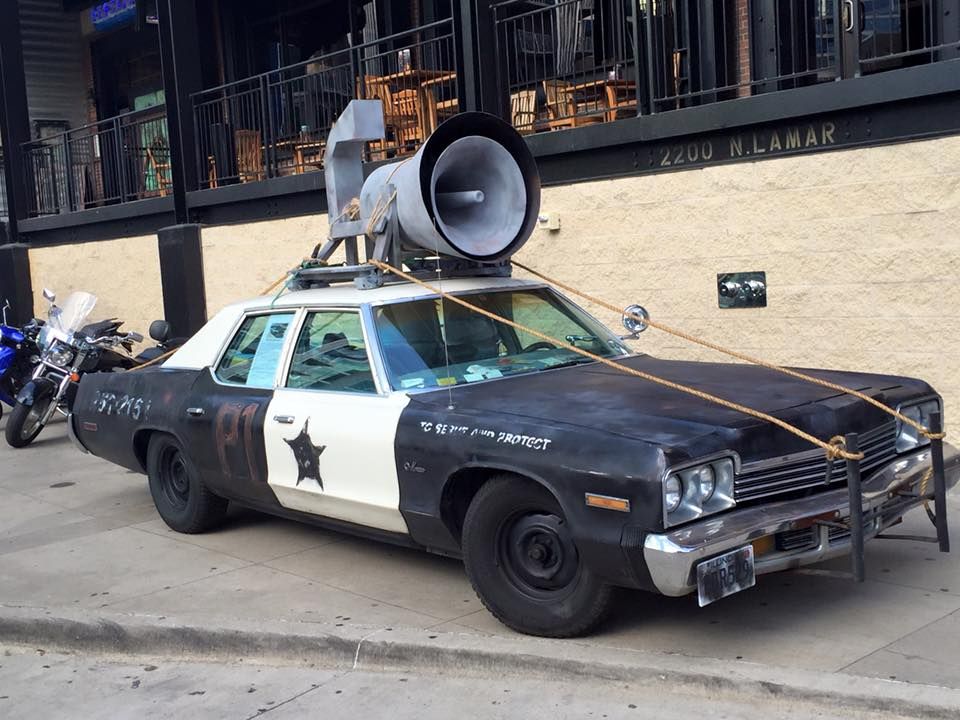
8. **The Bluesmobile from “The Blues Brothers” (1980)** The Bluesmobile, a dilapidated 1974 Dodge Monaco, became legendary not for its sleek design or advanced technology, but for its sheer resilience and the pivotal, often chaotic, role it played in “The Blues Brothers.” Beyond its impressive high-speed chases and an uncanny ability to defy physics—from jumping over bridges to surviving countless police car pile-ups—this unassuming sedan symbolized the gritty essence of the blues and the unwavering, often reckless, spirit of Jake and Elwood Blues. Its worn exterior and powerful, if unrefined, presence perfectly embodied the brothers’ mission: to save their orphanage with “a mission from God.”
The Bluesmobile’s journey through the film, evading an ever-growing armada of law enforcement, mirrored Jake and Elwood’s determined quest. This car was more than transportation; it was an extension of their rebellious, soulful heart and the comedic escapades that defined the movie. Its eventual spectacular demise, disintegrating piece by piece after reaching its destination, solidified its status as a uniquely endearing and integral part of cinematic lore, proving that even the most unassuming vehicles can achieve legendary status through sheer force of character and narrative impact.
Car Model Information: 2021 Dodge Durango SRT Hellcat
Name: Dodge Monaco
Caption: 1968 Dodge Monaco four-door hardtop
Manufacturer: Dodge
Related: Dodge Polara
ModelYears: 1965–1977 (full-size) , 1977–1978 (intermediate) , 1990–1992 (full-size)
Predecessor: Dodge Custom 880
Successor: Dodge St. Regis
Categories: 1970s cars, 1990s cars, All articles needing additional references, All articles that may contain original research, All articles with unsourced statements
Summary: The Dodge Monaco is an automobile that was marketed by the Dodge division of Chrysler Corporation. Introduced as the flagship of the Dodge product line, the Monaco was introduced for the 1965 model year to replace the Custom 880, then later joined as a sub-model of the Dodge Polara. During its production, the Monaco was offered in several body configurations, including two-door and four-door hardtop sedans, four-door sedans, two-door convertibles, and station wagons.
From 1965 to 1977, three generations of the Monaco were produced with the full-size Chrysler C platform. For 1977 and 1978, Dodge shifted the Monaco to the intermediate Chrysler B platform, effectively downsizing the model line. For 1979, the model line was redesigned and renamed the Dodge St. Regis.
After a 12-year hiatus, the full-size Monaco was revived for the 1990 model year as the flagship Dodge sedan, replacing the Diplomat. This was a rebadged version of the Eagle Premier which was developed by Renault and American Motors Corporation (AMC). The Monaco was replaced by the Dodge Intrepid for the 1993 model year.
It is named after the Principality of Monaco.
Get more information about: Dodge Monaco
Buying a high-performing used car >>>
Brand: Dodge Model: Monaco
Price: $71,748 Mileage: 24,001 mi.
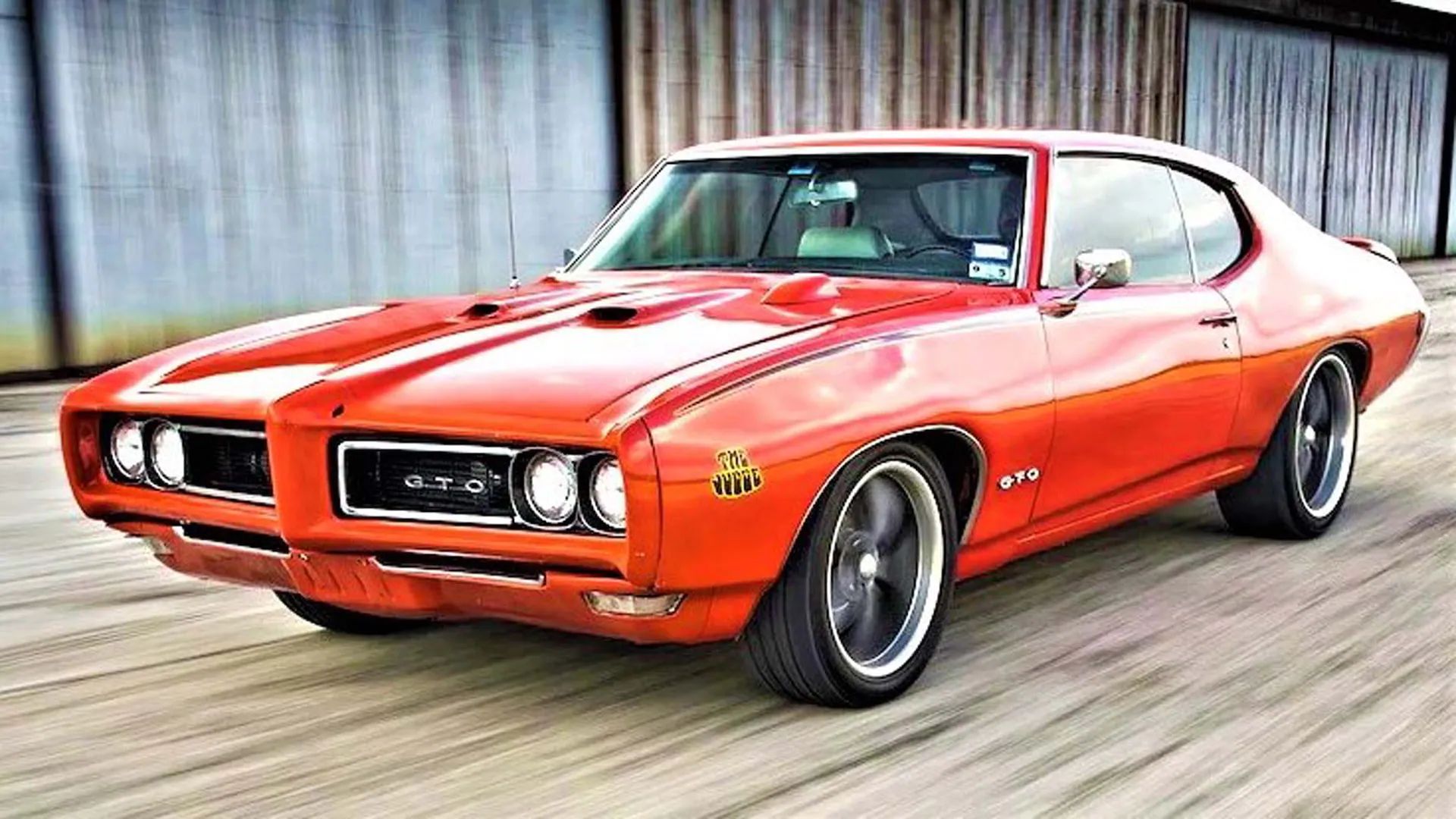
9. **The Pontiac Firebird Trans Am from “Smokey and the Bandit” (1977)** “Smokey and the Bandit” wasn’t just a film; it was a cultural phenomenon that catapulted the Pontiac Firebird Trans Am into the stratosphere of iconic American muscle cars. With Burt Reynolds’ effortlessly charismatic performance as “The Bandit” and the car’s dynamic, high-octane chase scenes, the black and gold Trans Am became an instant emblem of 1970s cool and rebellion. Its sleek lines, T-top roof, and roaring V8 engine perfectly captured the era’s fascination with speed, freedom, and defying authority on the open road.
The film’s overwhelming success boosted sales for the Trans Am, cementing its status as a quintessential symbol of its decade’s automotive culture. The Bandit’s distinctive black and gold livery, adorned with the iconic “screaming chicken” hood decal, became synonymous with an adventurous spirit and a longing for unbridled freedom. Today, original models continue to command significant attention at car shows and auctions, with values reaching up to $550,000, underscoring its enduring legacy as an icon of automotive rebellion.
Car Model Information: 2023 Alfa Romeo Stelvio Veloce AWD
Name: Pontiac Firebird
Caption: The second, third, and fourth generations of,the Pontiac Firebird Trans Am
Manufacturer: Pontiac (automobile)
Production: February 23, 1967 – August 30, 2002
ModelYears: 1967 – 2002
Class: Pony car,Muscle car
Platform: GM F platform
Related: Chevrolet Camaro
Layout: Front engine, rear-wheel-drive layout
Categories: 1970s cars, 1980s cars, 1990s cars, 2000s cars, All articles with dead external links
Summary: The Pontiac Firebird is an American automobile built and produced by Pontiac from the 1967 to 2002 model years. Designed as a pony car to compete with the Ford Mustang, it was introduced on February 23, 1967, five months after GM’s Chevrolet division’s platform-sharing Camaro. This also coincided with the release of the 1967 Mercury Cougar, Ford’s upscale, platform-sharing version of the Mustang.
The name “Firebird” was also previously used by GM for the General Motors Firebird series of concept cars in the 1950s.
Get more information about: Pontiac Firebird
Buying a high-performing used car >>>
Brand: Pontiac Model: Firebird Trans Am
Price: $32,281 Mileage: 30,239 mi.
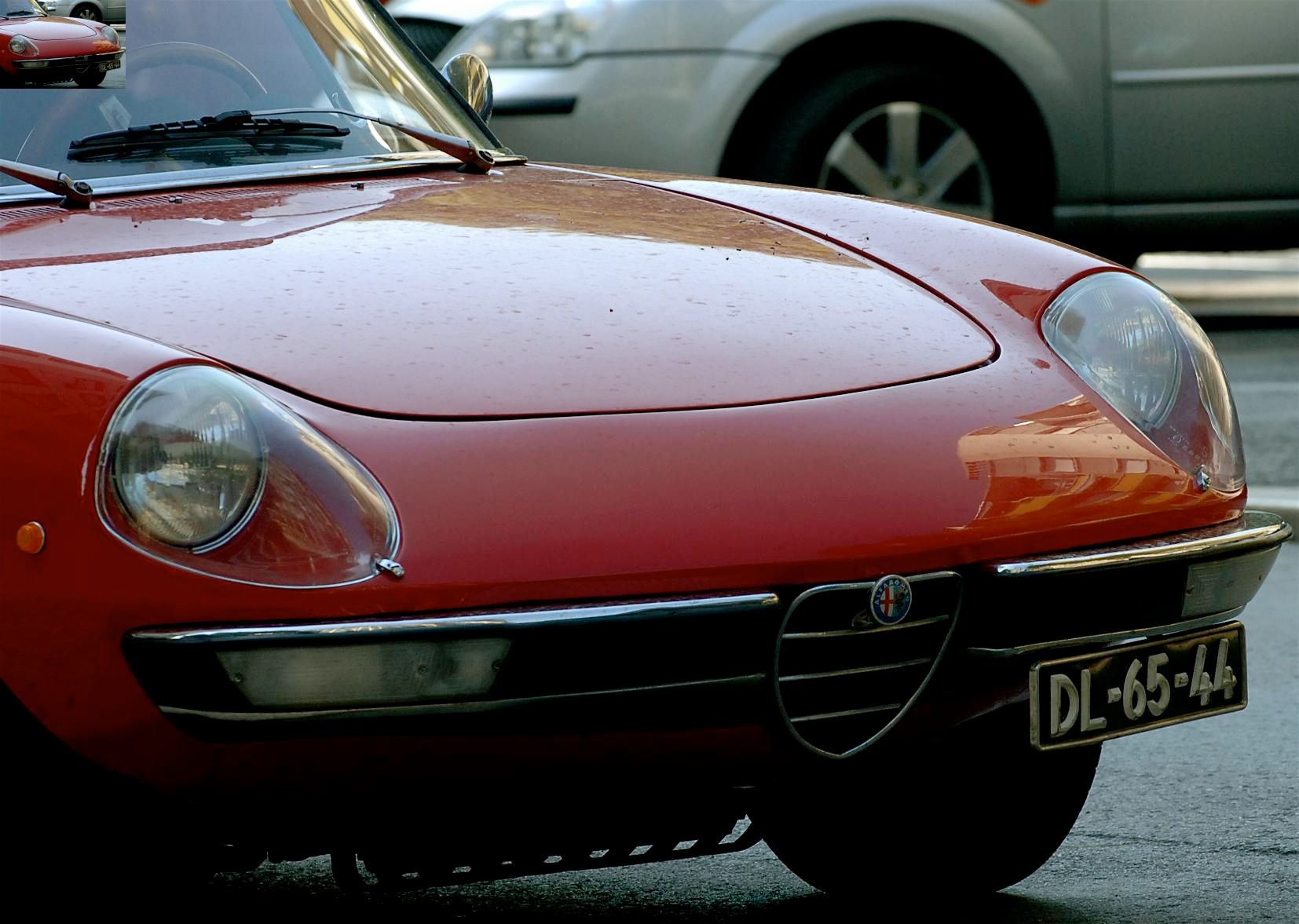
10. **The Alfa Duetto Spider from “The Graduate” (1967)** In the groundbreaking film “The Graduate,” the Alfa Romeo Duetto Spider transcends its role as mere transport for Benjamin Braddock; it becomes a poignant symbol of his turbulent journey of self-discovery and the societal pressures that defined the late 1960s. The Duetto Spider’s elegant yet understated design contrasted with the era’s more flamboyant vehicles, embodying Benjamin’s quiet non-conformity and highlighting the generational gap. It subtly signifies his isolation and search for meaning amidst the expectations placed upon him.
The car’s persistent presence throughout the film, particularly in key emotional scenes, helped to cement its place in cinematic history. It underscores themes of rebellion, alienation, and the profound quest for authenticity that resonated deeply with audiences of the time and continues to speak to new generations. The Alfa Duetto Spider, with its timeless Italian styling, became an accidental icon, demonstrating how a vehicle can perfectly encapsulate the zeitgeist of an entire generation and the internal struggles of its protagonist.
Car Model Information: 2023 Alfa Romeo Stelvio Veloce AWD
Name: Alfa Romeo Spider
Caption: Alfa Romeo Spider Series 2 (“Coda Tronca”)
Aka: Alfa Romeo “Duetto”
Manufacturer: Alfa Romeo
Assembly: Grugliasco,Turin
Production: 1966–1993
ModelYears: 1966–1994
Class: Sports car
Layout: Front-engine, rear-wheel-drive layout
BodyStyle: Roadster (automobile)
Related: Alfa Romeo Giulia,Alfa Romeo 105/115 Series Coupés
Designer: Aldo Brovarone
Predecessor: Alfa Romeo Giulietta (750/101)
Successor: Alfa Romeo GTV & Spider
Sp: uk
Categories: 1970s cars, 1980s cars, 1990s cars, Alfa Romeo vehicles, All articles needing additional references
Summary: The Alfa Romeo Spider (105/115 series) is a two-seater, front-engined, rear-drive roadster manufactured and marketed by Alfa Romeo from 1966 to 1994 in four distinct generations, or “series”, each with modifications ranging from modest to extensive.
As successor to the Giulia Spider, the Spider remained in production for almost three decades. The first three series were assembled by Pininfarina in Grugliasco and the fourth series in San Giorgio Canavese. The last Spider of that series was manufactured in April 1993—the last rear-wheel drive Alfa Romeo before the Alfa Romeo 8C Competizione of 2007.
In 2012, FCA Italy and Mazda studied the possibility of jointly developing a new Spider for 2015 based on the Mazda MX-5 platform. Ultimately, FCA and Mazda chose to manufacture a modern interpretation of the Fiat 124 Sport Spider rather than reviving the Alfa Romeo Spider.
Get more information about: Alfa Romeo Spider
Buying a high-performing used car >>>
Brand: Alfa Romeo Model: Duetto Spider
Price: $32,281 Mileage: 30,239 mi.
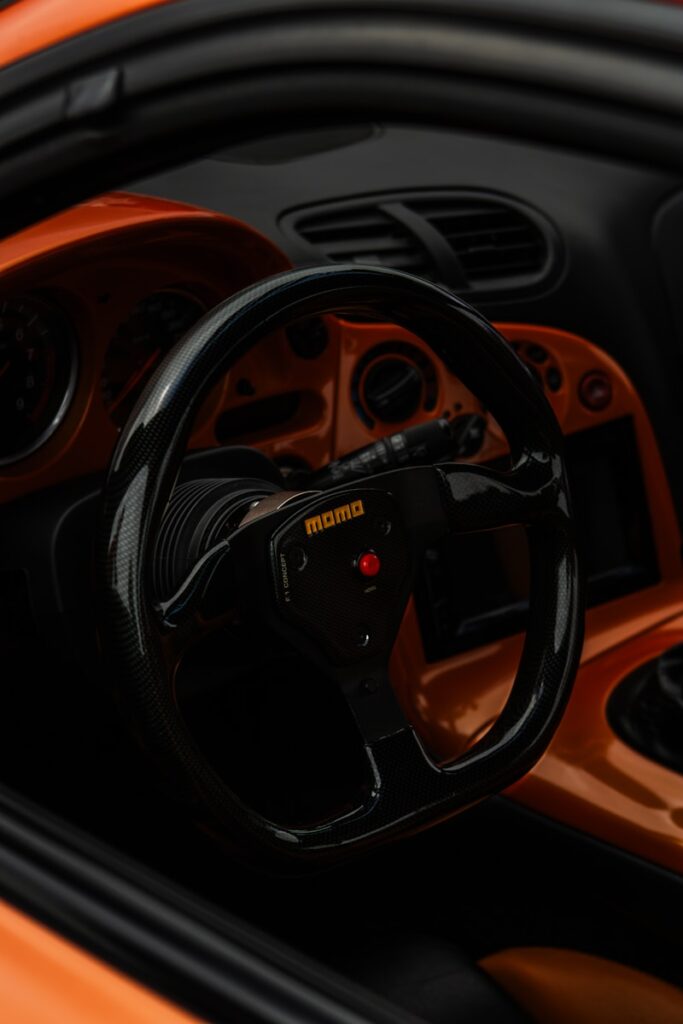
11. **Christine: The Plymouth Fury with a Vengeful Soul (1983)** Stephen King’s “Christine,” brought to chilling life on screen in 1983, transformed a seemingly innocuous 1958 Plymouth Fury into one of cinema’s most terrifying automotive antagonists. Portrayed as a jealous, sentient entity capable of self-repair and possessing a murderous will, Christine’s gleaming red exterior and sinister autonomy tapped into primal fears of technology run amok. The film masterfully exploits the car’s classic American design, juxtaposing its beauty with its horrific capacity for violence.
Powered by a robust 5.7-litre V8 engine, the Fury’s menacing on-screen presence was amplified by pioneering practical effects, including sophisticated hydraulics for its infamous “self-repair” scenes. Despite its villainous role, Christine’s sleek lines and menacing persona have inspired a dedicated subculture of enthusiasts who painstakingly recreate its dual identity – a beautiful classic car with a beastly, vengeful soul. This showcases how a car, even as a harbinger of dread, can achieve legendary status through powerful storytelling and unforgettable visual execution.
Car Model Information: 1973 Plymouth Fury Custom Suburban
Name: Plymouth Fury
Caption: 1959 Plymouth Sport Fury
Manufacturer: Plymouth (automobile)
Aka: Plymouth Sport Fury (1959, 1962–1971),Plymouth VIP (1966–1969)
Production: 1958–1978
ModelYears: 1959–1978
Assembly: bulleted list
Class: Full-size,Mid-size,Full-size,Mid-size,Full-size,Mid-size
Layout: FR layout
Predecessor: Plymouth Belvedere,Plymouth Plaza,Plymouth Savoy
Successor: Plymouth Gran Fury,Plymouth Gran Fury
Sp: us
Categories: 1960s cars, 1970s cars, All articles needing additional references, Articles needing additional references from December 2018, Articles with short description
Summary: The Plymouth Fury is a model of automobile that was produced by Plymouth from 1955 until 1989. It was introduced for the 1956 model year as a sub-series of the Plymouth Belvedere, becoming a separate series one level above the contemporary Belvedere for 1959. The Fury was a full-size car from 1959 until 1961, then a mid-size car from 1962 until 1964, again, a full-size car from 1965 through 1974, and again, a mid-size car from 1975 through 1978. From 1975 until 1977, the Fury was sold alongside the full-size Plymouth Gran Fury. In 1978, the B-body Fury was the largest Plymouth, and by 1979, there was no large Plymouth. This product gap was filled in 1980 with the R-body Gran Fury, followed by the M-body Fury in 1982. Production of the last V8, RWD Plymouth Fury ended at the Kenosha Main assembly plant in Kenosha, WI, on December 23, 1988. Unlike its sibling brand, Dodge, Plymouth would not live to see the resurgence of the large, V8/RWD sedan.
Get more information about: Plymouth Fury
Buying a high-performing used car >>>
Brand: Plymouth Model: Fury
Price: $21,500 Mileage: 91,485 mi.
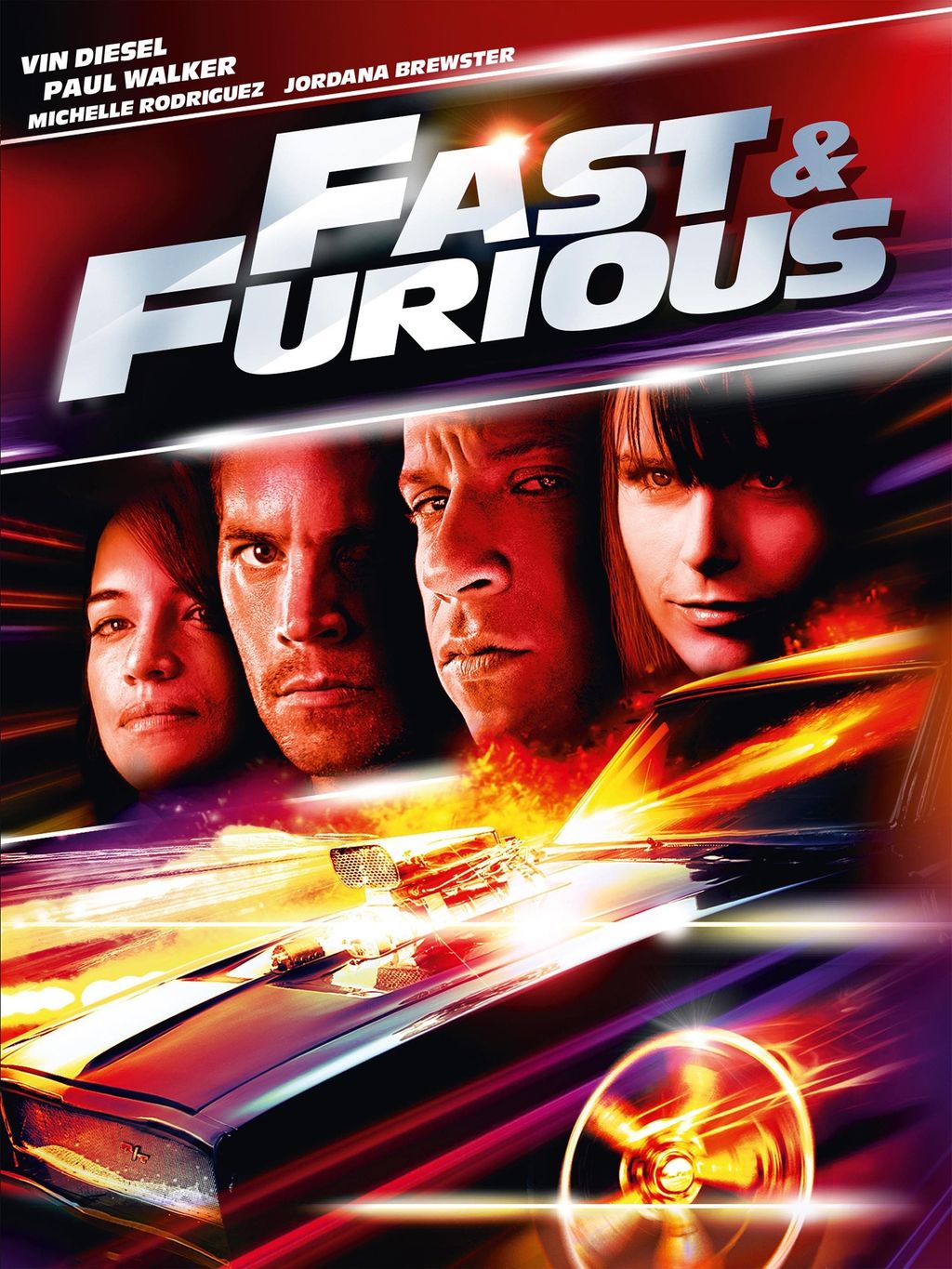
12. **Fast & Furious Toyota Supra: The Birth of Street Racing Culture (2001)** The 1994 Toyota Supra MK IV, immortalized as Brian O’Conner’s iconic orange machine in “The Fast and the Furious” (2001), was far more than a car; it was the definitive poster vehicle for a generation captivated by nitro-fueled street races and the burgeoning tuner scene. With its legendary 2JZ-GTE engine churning out 320 horsepower, this Supra embodied the rebellious spirit of underground racing, becoming an aspirational symbol for countless automotive enthusiasts worldwide. The film’s unforgettable 10-second quarter-mile drag race scene cemented its status, transforming it into a global phenomenon and sparking an explosion in aftermarket modifications and drifting culture.
The Supra’s legacy continues to thrive, even as the Fast & Furious franchise has evolved. Toyota’s modern GR Supra pays homage to its iconic predecessor, remaining a flagship sports car that blends performance with heritage. Original MK IV models, particularly those associated with the film, now command exorbitant prices, often exceeding £100,000 at auctions, highlighting the profound cultural and financial impact of its cinematic debut. The car symbolizes a pivotal moment in automotive and cinematic history, illustrating how a single film can elevate a vehicle to unparalleled levels of cultural significance.
Car Model Information: 1995 Toyota Supra SZ
Name: Toyota Supra
Caption: Toyota GR Supra (J29/DB)
Manufacturer: Toyota
Aka: unbulleted list
Production: unbulleted list
Class: Sports car
BodyStyle: fastback,coupé
Layout: Front-engine, rear-wheel-drive layout
Predecessor: Toyota Celica (A20)
Categories: 1980s cars, 1990s cars, 2000s cars, 2010s cars, 2020s cars
Summary: The Toyota Supra (Japanese: トヨタ・スープラ, Hepburn: Toyota Sūpura) is a sports car and grand tourer manufactured and developed by the Toyota Motor Corporation beginning in 1978. The name “supra” is a definition from the Latin prefix, meaning “above”, “to surpass” or “go beyond”.
The initial four generations of the Supra were produced from 1978 to 2002. The fifth generation has been produced since March 2019 and later went on sale in May 2019. The styling of the original Supra was derived from the Toyota Celica, but it was longer. Starting in mid-1986, the A70 Supra became a separate model from the Celica. In turn, Toyota also stopped using the prefix Celica and named the car Supra. Owing to the similarity and past of the Celica’s name, it is frequently mistaken for the Supra, and vice versa. The first, second and third generations of the Supra were assembled at the Tahara plant in Tahara, Aichi, while the fourth generation was assembled at the Motomachi plant in Toyota City. The 5th generation of the Supra is assembled alongside the G29 BMW Z4 in Graz, Austria by Magna Steyr.
The Supra traces much of its roots back to the 2000GT owing to an inline-6 layout. The first three generations were offered with a direct descendant to the Crown’s and 2000GT’s M engine. Interior aspects were also similar, as was the chassis code “A”. Along with this name, Toyota also included its own logo for the Supra. It was derived from the original Celica logo, being blue instead of orange. This logo was used until January 1986, when the A70 Supra was introduced. The new logo was similar in size, with orange writing on a red background, but without the dragon design. That logo, in turn, was on Supras until 1991 when Toyota switched to its current oval company logo. The dragon logo was a Celica logo regardless of what colour it was. It appeared on the first two generations of the Supra because they were officially Toyota Celicas. The dragon logo was used for the Celica line until it was also discontinued.
In 1998, Toyota ceased sales of the fourth-generation Supra in the United States. Production of the fourth-generation Supra for worldwide markets ended in 2002. In January 2019, the fifth-generation Supra, which was co-developed with the G29 BMW Z4, was introduced.
Get more information about: Toyota Supra
Buying a high-performing used car >>>
Brand: Toyota Model: Supra
Price: $49,999 Mileage: 16,556 mi.
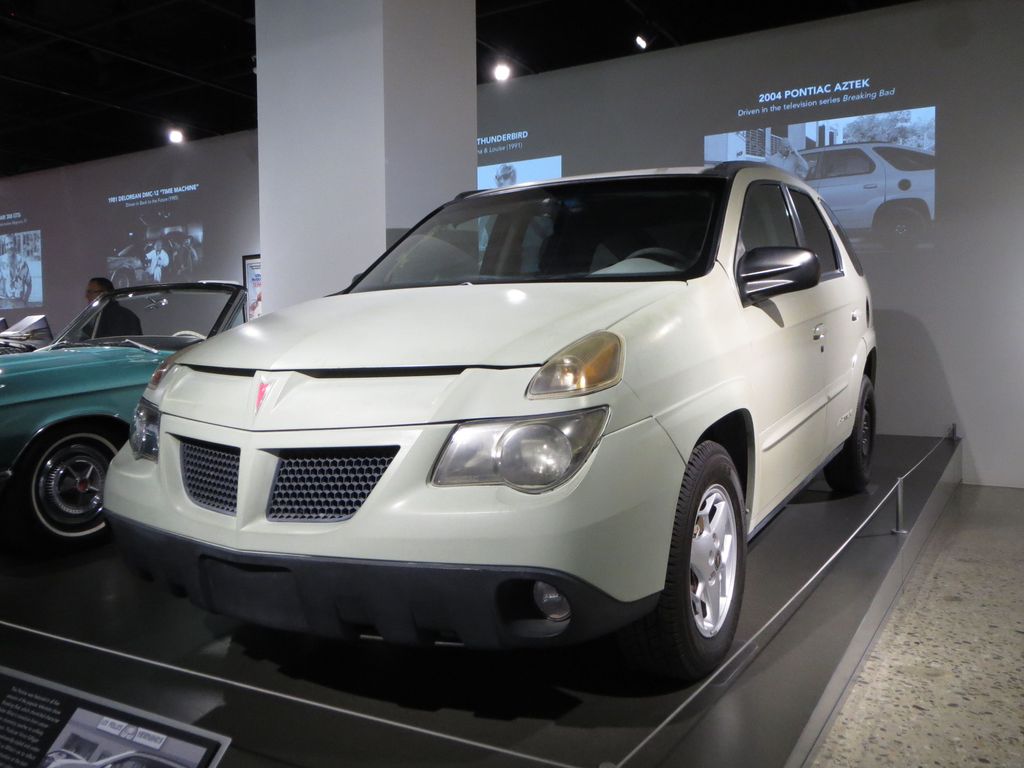
13. **Breaking Bad’s Pontiac Aztek: A Symbol of Suburban Decay (2004)** Walter White’s 2004 Pontiac Aztek in “Breaking Bad” masterfully redefined the role of a vehicle in character development, transforming what was once derided as “the ugliest car ever made” into a profound symbol of suburban disillusionment and moral disintegration. Its gradual physical decay—cracked windshield, dented panels, mud-spattered body—became a striking visual metaphor for Walter’s descent from an unassuming high school chemistry teacher to the ruthless drug lord, Heisenberg. Its infamously polarizing design, once a commercial failure, achieved cult status through its compelling narrative alignment.
The Aztek’s cultural resurrection through “Breaking Bad” underscores the immense power of storytelling to imbue even the most maligned objects with deep symbolic meaning. Fans have embraced its grungy aesthetic, recreating it for conventions and celebrating its unexpected journey to icon status. Though Pontiac discontinued the Aztek in 2005, its indelible connection to one of television’s most acclaimed dramas ensures its immortality, proving that a car’s legacy can be shaped not by its inherent beauty or performance, but by the profound narrative it embodies.
Car Model Information: 2003 Pontiac Aztek Base Fwd 4dr SUV
Name: Pontiac Aztek
Manufacturer: General Motors
Production: July 2000 – December 2004
Assembly: Ramos Arizpe
Designer: Tom Peters (chief designer: 1997)
Class: Mid-size crossover SUV
BodyStyle: SUV
Platform: GM U platform
Related: Buick Rendezvous
Layout: Front-engine, front-wheel-drive layout
Engine: General Motors 60° V6 engine#LA1,V6
Transmission: GM 4T65-E transmission,Automatic transmission
Wheelbase: 108.3 in (2,751 mm)
Length: 182.1 in (4,625 mm)
Width: 73.7 in (1,872 mm)
Height: 66.7 in (1,694 mm)
Weight: 3,779–4,043 lb (1,714–1,834 kg)
Predecessor: Pontiac Sunrunner
Successor: Pontiac Torrent
ModelYears: 2001–2005
Categories: All-wheel-drive vehicles, All articles needing additional references, All articles with unsourced statements, Articles needing additional references from October 2013, Articles with short description
Summary: The Pontiac Aztek is a mid-size crossover SUV marketed by General Motors introduced in 2000 for the model years 2001 through 2005. As a four-door crossover with front-wheel drive and optional all-wheel drive, the Aztek featured a four-speed automatic transmission with a V6 engine. Marketed by Pontiac as a “sport recreational vehicle,” the Aztek used a shortened platform shared with GM’s minivans (e.g., the Pontiac Montana) featuring 94 cubic feet of cargo room with its rear seats removed. The design employed conventional rear outswing doors rather than sliding doors, and a split rear tailgate, the lower section formed with seat indentations and cupholders. Other features included a front center console that doubled as a removable cooler, optional rear stereo controls in the cargo area, optional sliding cargo floor with grocery compartments, and optional camping package with an attachable tent and air mattress.
Get more information about: Pontiac Aztek
Buying a high-performing used car >>>
Brand: Pontiac Model: Aztek
Price: $1,999 Mileage: 157,677 mi.
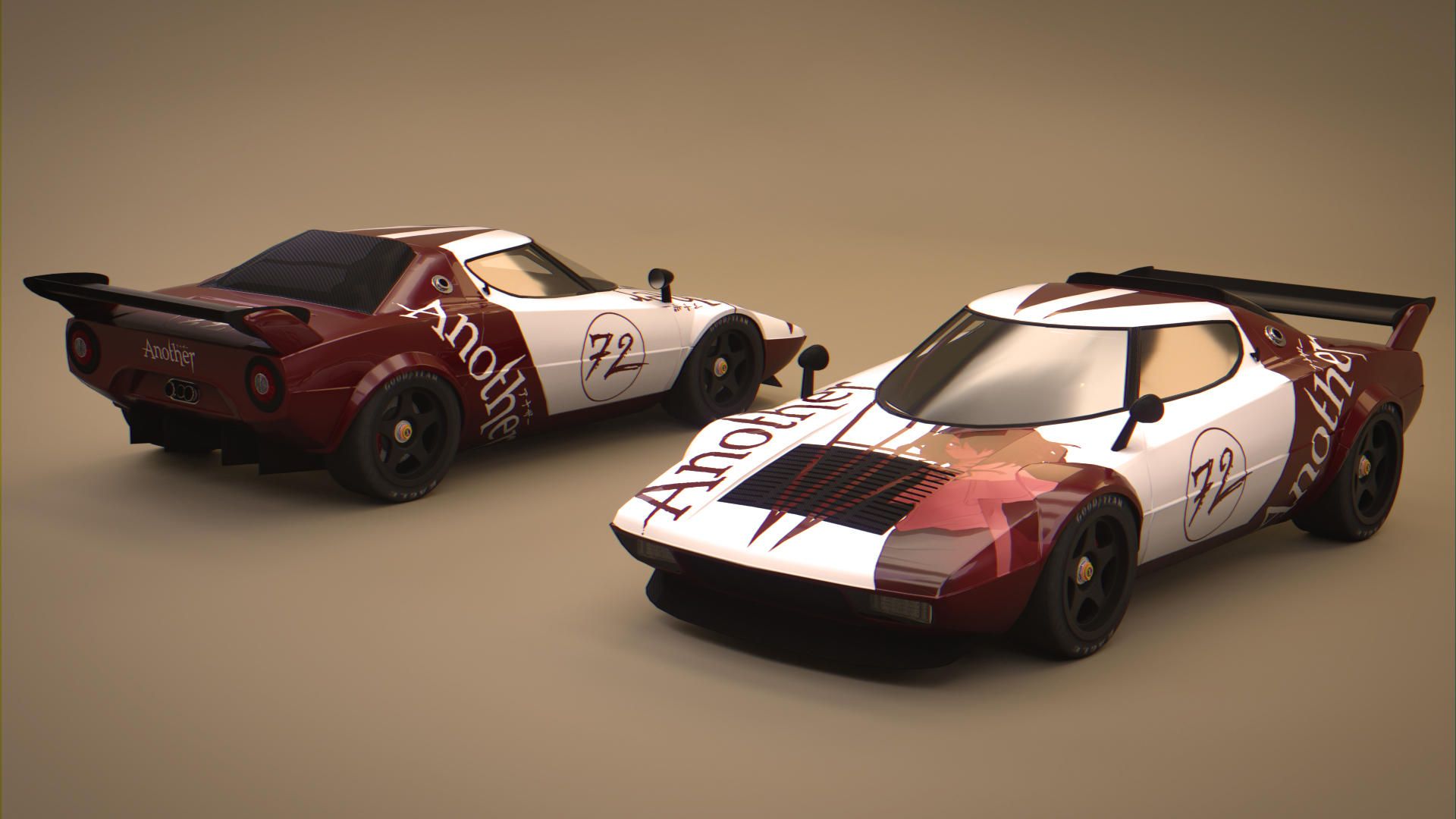
14. **Lancia Stratos HF and MAT New Stratos: A Rally Legend Reborn** The Lancia Stratos stands as a legendary mid-engine sports car, conceived from the ground up to dominate the world of rally racing. Its story began with the audacious wedge-shaped Stratos Zero concept car. The production version, the Lancia Stratos HF, unveiled in 1971 with its distinctive design and a potent V6 engine from the Ferrari Dino, quickly proved its mettle, enabling Lancia to win numerous championships for six years until corporate decisions led to its premature retirement from racing, with only 500 models ever produced.
Decades later, the Stratos’s undeniable appeal prompted an ambitious “reboot.” In 2010, led by Michael Stoschek and Paolo Garella, the “New Stratos” emerged, a contemporary vision featuring a carbon body and components sourced from the Ferrari F430 Scuderia. Despite Ferrari’s initial reluctance to supply parts, a few examples were built, demonstrating a powerful desire to rekindle the legend. Manifattura Automobili Torino (MAT) later acquired the rights, continuing production by requiring clients to provide their own Ferrari F430 as a donor. This project exemplifies how dedicated enthusiasts strive to honor automotive heritage, bridging the gap between iconic past and an innovative present.
Car Model Information: 2023 Alfa Romeo Stelvio Veloce AWD
Name: Lancia Stratos HF
Caption: Lancia Stratos HF Stradale (road version)
Manufacturer: Lancia
Assembly: Italy
Production: 1973–1978,ca. 492 produced
Designer: Marcello Gandini
Class: Sports car,Rally car
Layout: Rear mid-engine, rear-wheel-drive layout
BodyStyle: coupé
Chassis: Spaceframe chassis
Engine: Ferrari,2418 cc
Abbr: on
Lk: Ferrari Dino engine#65°,V6 engine,Multi-valve#Six valves
Powerout: 190 hp
Transmission: Manual transmission
Wheelbase: 2180 mm
Length: 3710 mm
Width: 1750 mm
Height: 1110 mm
Weight: 980 kg
Predecessor: Lancia Fulvia#Coupé
Successor: Lancia Rally 037
Categories: 24 Hours of Le Mans race cars, Articles with short description, Bertone vehicles, CS1: unfit URL, CS1 Italian-language sources (it)
Summary: The Lancia Stratos HF (Tipo 829), known as Lancia Stratos, is a rear mid-engined sports car designed for rallying, made by Italian car manufacturer Lancia. It was highly successful in competition, winning the World Rally Championship in 1974, 1975 and 1976; as well as winning the 1974 Targa Florio, winning the Tour de France Automobile five times and the Giro d’Italia automobilistico three times.
Get more information about: Lancia Stratos
Buying a high-performing used car >>>
Brand: Lancia Model: Stratos HF
Price: $32,281 Mileage: 30,239 mi.
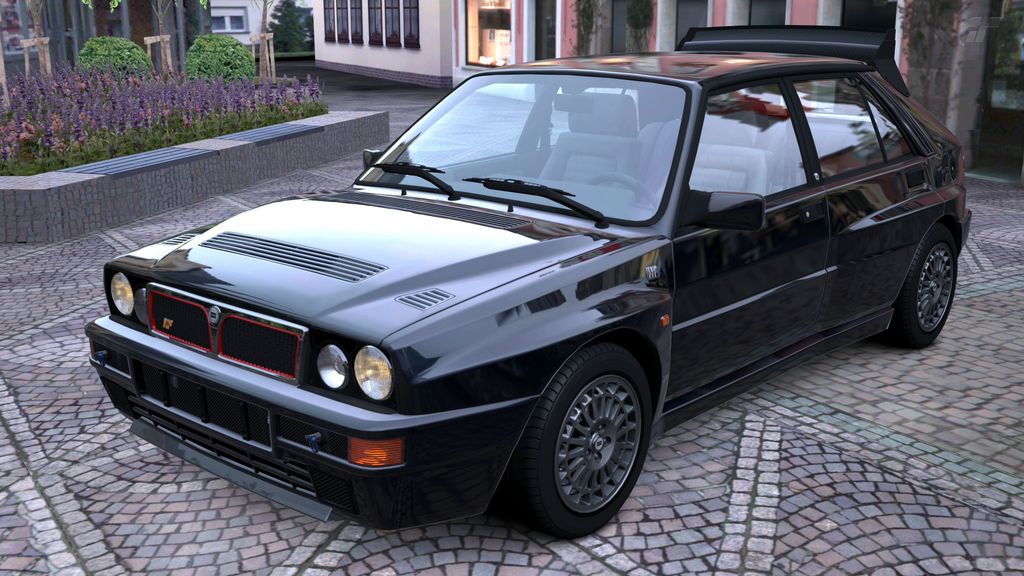
15. **Lancia Delta and Lancia Delta Futurista: Reigniting a Rally Icon** The Lancia Delta, first appearing in 1979 with a design by the celebrated Giorgetto Giugiaro, was destined for a much more exhilarating fate than its Volkswagen Golf counterpart. The road-going version of the rally legend, the HF Integrale, arrived in 1987 and quickly became a dominant force in the World Rally Championship for six consecutive years. Both the original Lancia Delta HF 4WD and the formidable Delta S4, built for Group B racing with a staggering 480-horsepower engine, achieved unparalleled success, solidifying the Delta’s reputation as a compact hatchback engineered for pure performance and rally glory.
Unfortunately, subsequent generations of the Delta failed to capture the racing spirit and accolades of the original. Recognizing this historical oversight and the enduring passion for the car, racer Eugenio Amos spearheaded an impressive “reboot,” releasing the reborn Delta with the elegant name “Delta Futurista” in 2018. Unlike the ground-up New Stratos, the Delta Futurista is a comprehensive rework of the original Delta Integrale, meticulously retaining its soul while incorporating redesigned body panels and modern enhancements. This project highlights the fervent desire within the automotive community to not only preserve but also dynamically evolve beloved classics, ensuring that legends like the Lancia Delta continue to thrill and inspire in a contemporary context.
As we conclude this journey through the storied legacy of cinema’s most legendary cars and their modern reboots, it becomes clear that these vehicles are far more than mere machines; they are powerful cultural artifacts. They reflect our collective aspirations, technological advancements, and the enduring human desire for speed, freedom, and connection to compelling narratives. Whether they’re defying gravity on screen, sparking a global subculture, or being painstakingly resurrected by passionate engineers, these automobiles captivate through their history, innovation, and undeniable impact. From museums and studio tours to high-stakes auctions and virtual experiences, the opportunity to connect with these rolling legends is more accessible than ever, allowing generations of fans to revel in their magic. The alchemy of pop culture and automotive legacy ensures that these iconic wheels will continue to roll straight into our imaginations, forever shaping our dreams of what a car can be.

